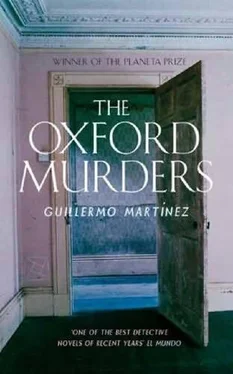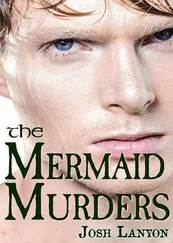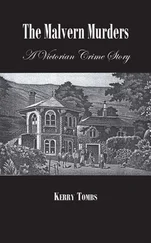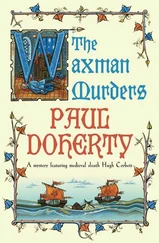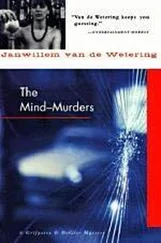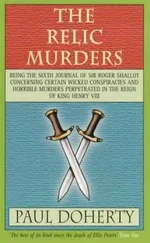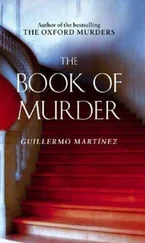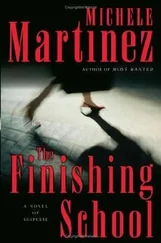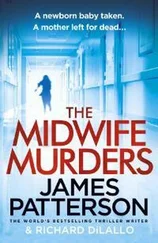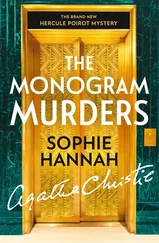“Good news?” asked Lorna as I got back in the car.
I told her, and in my admiring tone she must have caught the strange contradictory pride I felt in mathematicians.
“Perhaps you would rather have been there this afternoon,” she said and then, laughing: “What can I do to make it up to you?”
We spent the rest of the afternoon making love like a pair of happy rabbits. At seven, as it was getting dark, we were lying side by side in exhausted silence when the telephone rang. Lorna leaned across me to answer it. A look of alarm appeared on her face, and then horrified sorrow. She indicated that I should turn on the television and, with the phone wedged between shoulder and chin, she started dressing.
“There’s been an accident on the way into Oxford, at a spot they call the ‘blind triangle’. A bus drove over the side of the bridge and down the bank. They’re expecting several ambulances with the injured at the Radcliffe-they need me in the X-ray department.”
I changed channels until I found the local news. A female reporter was talking as she moved closer to the shattered barrier of the bridge. I pressed buttons on the remote but couldn’t get any sound.
“The sound doesn’t work,” said Lorna. Now fully dressed, she was searching for her uniform in the wardrobe.
“Seldom and a big group of mathematicians were coming back from Cambridge by bus this afternoon,” I said.
Lorna turned round, as if gripped by a terrible foreboding, and came over to me.
“My God, they would have had to cross that bridge if they were coming from there.”
We stared despairingly at the screen. There was a shot of broken glass scattered over the bridge at the spot where the bus had crashed through the barrier. As the reporter peered over the side and pointed, we saw, magnified by the telephoto lens, the mass of crumpled metal that had once been the bus. The camera moved unsteadily, following the reporter as she made her way down the steep slope. A section of the chassis had broken off where the bus must have first struck the ground. The camera swung to show the bottom of the slope, much closer now. Ambulances had managed to reach the bus from below and paramedics had started rescuing passengers. There was a heart-rending close-up of the silent, shattered bus windows and a section of orange bodywork showing an emblem I didn’t recognise. Lorna squeezed my arm.
“It’s a school bus,” she said. “My God, there were children inside! Do you think…?” she whispered, unable to finish her sentence. She looked at me, frightened, as if a game we’d been playing had become nightmarish reality. “I’ve got to go to the hospital now,” she said, kissing me quickly. “Just pull the door shut when you leave.”
I sat watching the hypnotic succession of images on the screen. The camera circled the bus, focusing on the window where the rescue team was gathered. A paramedic had managed to climb inside the bus and was trying to get one of the children out. A child’s bare legs appeared, swinging disjointedly until a row of arms, forming a stretcher, grabbed hold of them. The child was wearing gym shorts, bloodstained down one side, and bright white trainers. As the rest of his body emerged I saw that he was wearing a vest with a large number across the chest. The camera again focused on the window. A pair of hands was carefully supporting the boy’s head. There was blood trickling down the wrists, as if it were pouring from the back of the child’s head. The camera showed a close-up of the boy’s face and I was startled to see, beneath a long, untidy blond fringe, the unmistakable features of a child with Down’s Syndrome. The face of the man inside the bus now appeared for the first time. He mouthed something, repeating it in desperation and indicating with his bloodstained hands that there was no one left inside the bus.
The camera followed the procession that carried the last child round behind the bus. Someone then stopped the cameraman going any further, but there was a brief glimpse of a row of bodies on stretchers covered with sheets. The programme then returned to the studio and showed a picture of a group of boys before a game. They were the basketball team from a school for children with Down’s Syndrome, on their way back from an inter-school competition in Cambridge. The boys’ names appeared briefly at the bottom of the screen-five players and five substitutes-followed by the terse statement that all ten were dead. Then another photo appeared: the face of a young man, which I vaguely recognised, though the name beneath the picture, Ralph Johnson, was quite unfamiliar. He was the driver of the bus. He had apparently managed to jump out just before it crashed, but had died too, just before reaching hospital. The photo disappeared from the screen, to be replaced by a list of all the tragedies that had happened at the same spot.
I switched off the television and lay down with a pillow over my eyes, trying to remember where I’d seen the bus driver’s face. The picture had no doubt been taken several years earlier. The very short, curly hair, sharp cheekbones, sunken eyes-I’d seen him before, not as a bus driver but somewhere else. Where? I got up irritably and took a long shower, trying to picture all the faces I’d seen around town. As I was dressing and heading back to the bedroom for my shoes, I tried to recall the face on the screen-the small, tight curls, the fanatical expression. Yes. I sat on the bed, stunned by the surprise, by all the different implications. But I was sure I was right. After all, I hadn’t met that many people in Oxford. I called the hospital and asked for Lorna. When she came on the phone, I said, automatically lowering my voice:
“The bus driver…he was Caitlin’s father, wasn’t he?”
“Yes,” she said after a moment, and I noticed that she too was almost whispering.
“Is it what I think it is?” I asked.
“I don’t know. I didn’t want to say anything. One of the lungs was a match. Caitlin’s just been taken to theatre-they think they can still save her.”
For the first few hours I thought it must have been a mistake,” said Inspector Petersen. “I thought the real target was the bus you mathematicians were in, which wasn’t far behind. I believe some of you even saw the other bus fall down the bank, didn’t you?” he asked Seldom.
We were in the French café in Little Clarendon Street. Petersen had arranged to meet us there, away from his office. I wondered if he wanted to apologise, or thank us for something. He was wearing a severe black suit and I remembered that there was to be a special funeral service that morning for the children who had died. It was the first time I’d seen Seldom since his trip to Cambridge. He was grave and silent and the inspector had to repeat his question.
“Yes,” answered Seldom, “we saw it crash into the barrier and come off the bridge. Our bus stopped immediately and someone called the Radcliffe. Some people thought they could hear screaming from the bottom of the slope. The strange thing is,” he said, as if recounting a nightmare, ‘when we looked down, two ambulances were already there’.”
“They were there because, this time, the message came before, not after the crime. That’s the first thing I noticed too. And it didn’t go to you, as the previous ones did, but directly to the accident and emergency department at the hospital. They called me as the ambulances set out.”
“What was the message?” I asked.
“‘The fourth in the series is the tetraktys. Ten points in the blind triangle.’ It was a telephone call, and fortunately it was recorded. We’ve got other recordings of his voice and though he tried to disguise it a bit there’s no doubt it’s him. We even know where the call was made from: a call box at a service station on the outskirts of Cambridge, where he stopped to fill up with petrol. This is where we find the first intriguing detail. Detective Sergeant Sacks noticed it when he checked the receipts: he bought very little petrol, much less than when leaving Oxford. And sure enough, when we inspected the bus after the crash, we found that the tank was almost empty.”
Читать дальше
